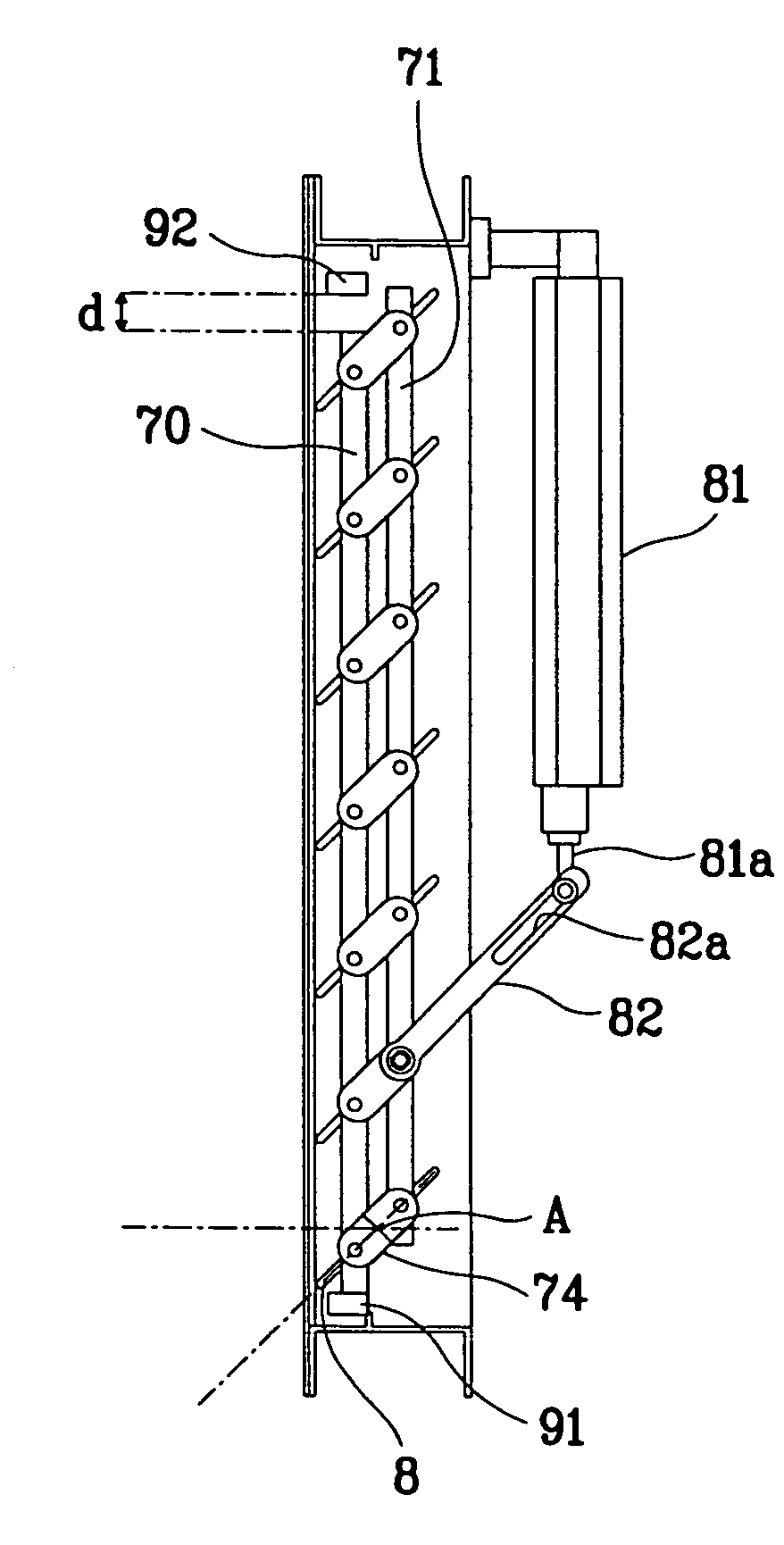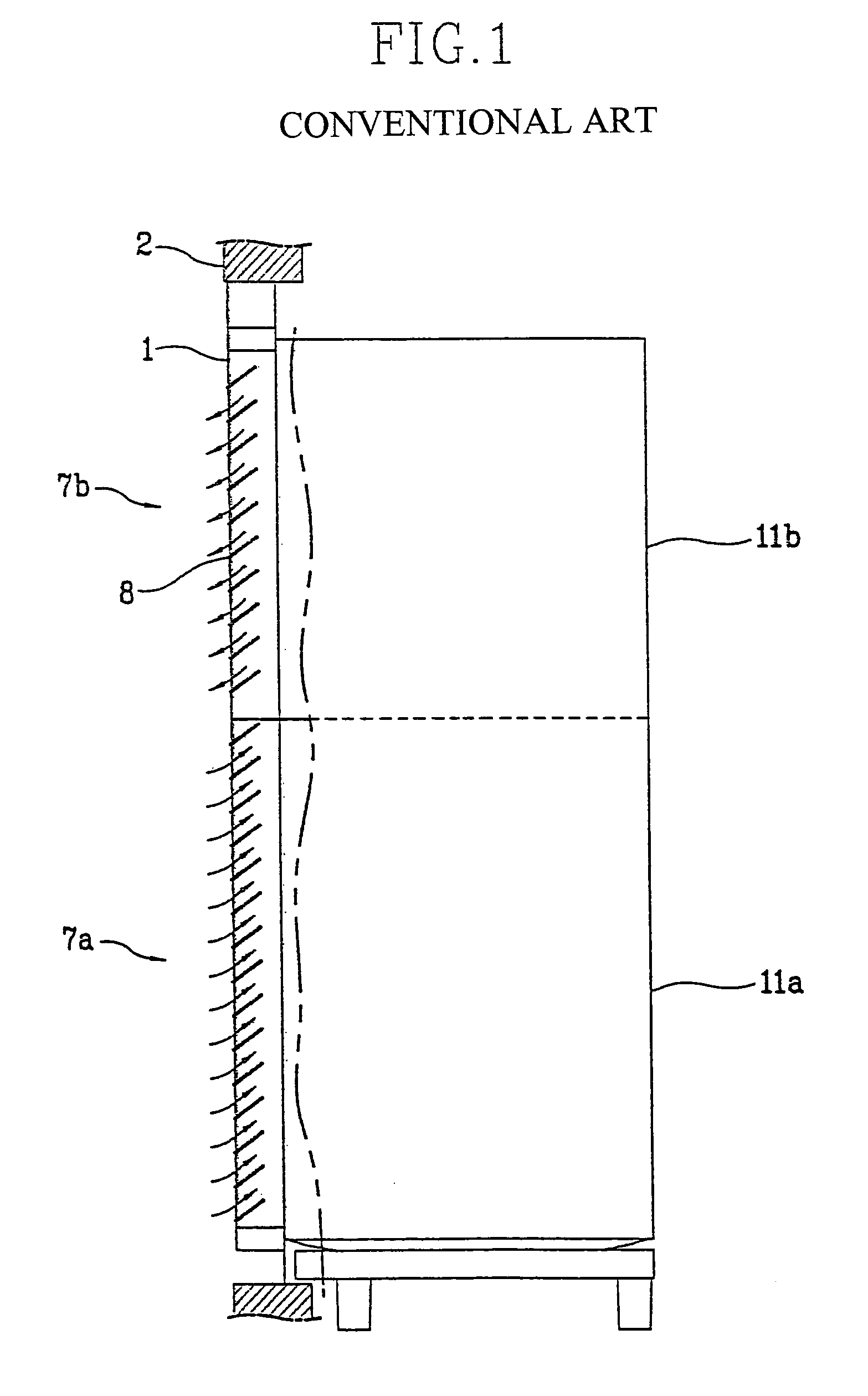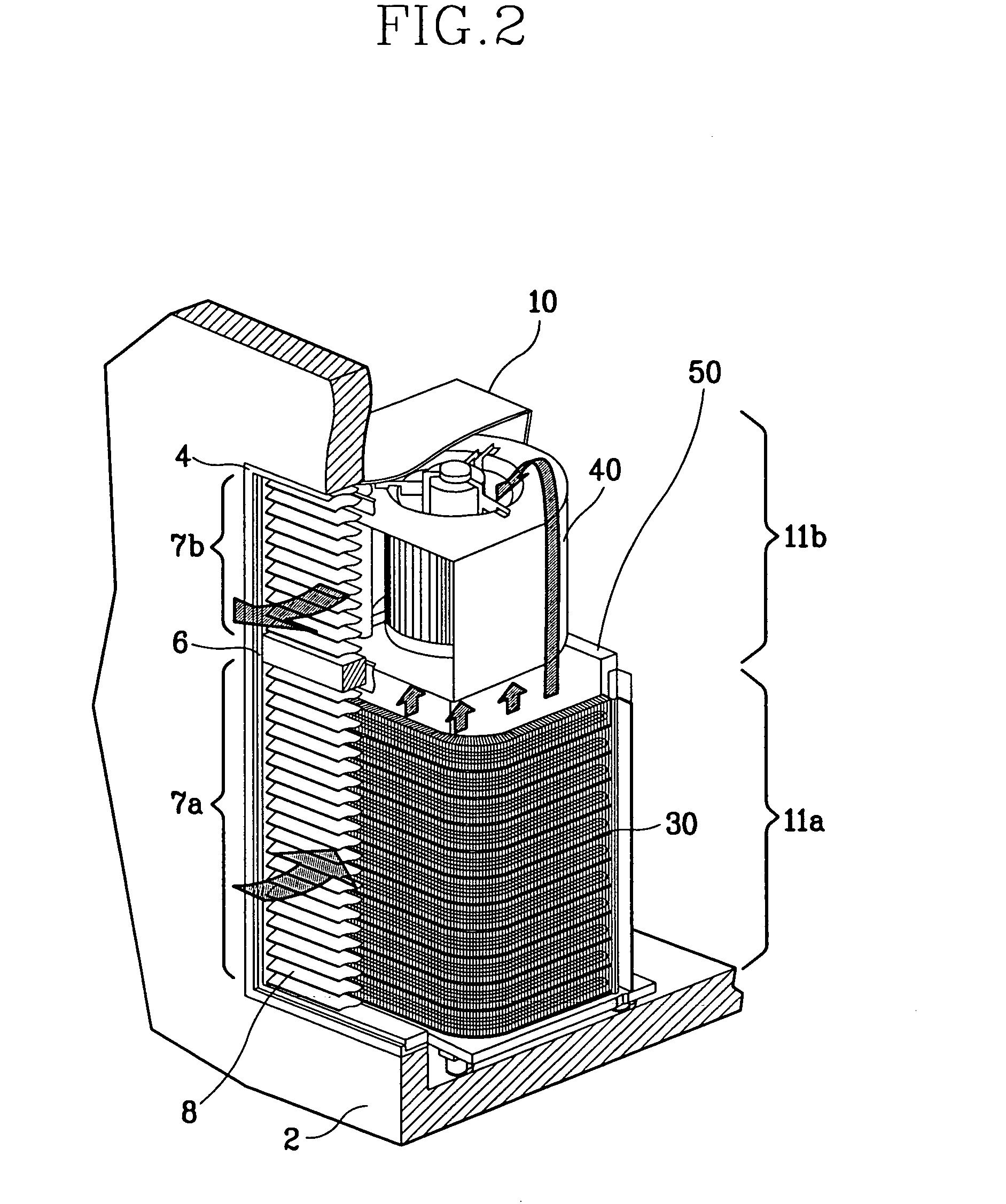Apparatus for controlling outdoor unit's louver blades and its method
a technology for outdoor units and apparatuses, which is applied in the direction of domestic cooling apparatus, ventilation systems, heating types, etc., can solve the problems of louver blades which have not been used for a long time, may not be normally operated, and the installation of conventional outdoor units for air conditioners is restricted
- Summary
- Abstract
- Description
- Claims
- Application Information
AI Technical Summary
Benefits of technology
Problems solved by technology
Method used
Image
Examples
first embodiment
[0133]FIG. 6 is a structure view illustrating an apparatus for controlling louver blades of an outdoor unit in accordance with the present invention. Referring to FIG. 6, the apparatus includes a louver blade member 100 as shown in FIGS. 4A and 4B, a driving member 200 for opening / closing louver blades 8 of the louver blade member 100 under the control of a microcomputer 90, a first limit switch 91 for continuously transmitting a contact point signal when the louver blades 8 are closed, and the microcomputer 90 for controlling the driving member 200, and receiving the contact point signal from the first limit switch 91.
[0134]The microcomputer 90 includes a memory (not shown) for storing a non-use reference time of the louver blades 8 automatically set or set by the user before the operation of the outdoor unit 10. Here, the non-use reference time is an allowable time for which the louver blades 8 can remain in a close state. If the louver blades 8 are not operated for a long term, a...
second embodiment
[0148]FIGS. 10A and 10B are side views illustrating a louver blade member and a driving member in close and open states in accordance with the present invention.
[0149]FIG. 10A shows a first limit switch 91 contacting with one end of one of first to fourth levers 70, 71, 72 and 73 (for example, first lever 70), generating a first contact point signal, and continuously transmitting the signal to a microcomputer, and a second limit switch 92 contacting with the other end of the first lever 70, generating a second contact point signal, and continuously transmitting the signal to the microcomputer. The detailed operation will be explained in FIG. 11.
[0150]Referring to FIG. 10B, a driving source 81 (for example, driving motor, hydraulic cylinder, etc.) allows a mover 81a to perform a rectilinear motion in parallel to the first to fourth levers 70, 71, 72 and 73 under the control of the microcomputer, the mover 81a performing the rectilinear motion pushes a connector 82 along a guide groov...
third embodiment
[0163]FIG. 14 is a structure view illustrating an apparatus for controlling louver blades of an outdoor unit in accordance with the present invention. As depicted in FIG. 14, the apparatus includes a louver blade member 100, a driving member 200 for opening / closing the louver blades 8 of the louver blade member 100 under the control of a microcomputer 90, first and second limit switches 91 and 92 for continuously transmitting first and second contact point signals to the microcomputer 90 when the louver blades 8 are closed and opened, and the microcomputer 90 for controlling the driving member 200, and receiving the contact point signals from the first and second limit switches 91 and 92. In addition, the apparatus includes a current transformer 94 connected to the driving member 200, for deciding whether an overload current is generated in a driving source 81 of the driving member 200, generating an overload current generation signal, and transmitting the signal to the microcompute...
PUM
 Login to View More
Login to View More Abstract
Description
Claims
Application Information
 Login to View More
Login to View More - R&D
- Intellectual Property
- Life Sciences
- Materials
- Tech Scout
- Unparalleled Data Quality
- Higher Quality Content
- 60% Fewer Hallucinations
Browse by: Latest US Patents, China's latest patents, Technical Efficacy Thesaurus, Application Domain, Technology Topic, Popular Technical Reports.
© 2025 PatSnap. All rights reserved.Legal|Privacy policy|Modern Slavery Act Transparency Statement|Sitemap|About US| Contact US: help@patsnap.com



